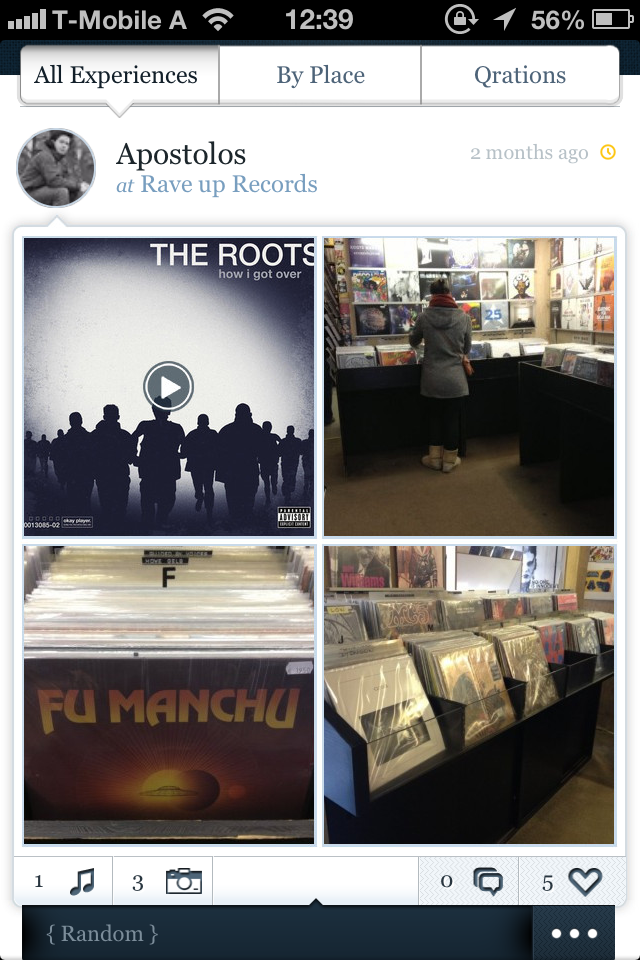Tomorrow I’ll be on my way to New York City where I’ll be staying for a week. The reason I’m traveling is because I was accepted into a program about New York’s startups and startup ecosystem. Very much like the one couple years ago about Silicon Valley. Anyhow, I’m a huge fan of flights — especially transatlantic flights — and since I rarely sleep onboard, I want to spend my time productively.
(Occasionally, I also love to shoot short videos.)
My plans are programming (Java!) and reading. My Instapaper queue was pretty long lately thus I forced myself to archive all but three unread articles. Because I knew that if I wouldn’t do this, I wouldn’t read anything.
After browsing the internet and asking on Twitter for good, mainly non-fiction, long-form articles I came up with 20 quite interesting articles to read. And since my friend Alexandros, knows my obsession with tech and industry news told me to ‘back off of tech’ I felt obliged to tweet back at him my Instapaper queue saying in a way, ‘hey, look, no tech this time.’ Well, except a feature by The Verge about the latest iTunes, Apple, and the music industry.
While generally I want to be on point and concise, and after spending 3 paragraphs essentially writing about embedding my Instapaper queue here because the articles are extremely interesting, well, it’s time to do it. Here it is, people. Rejoice.
- A Most Profound Math Problem — The New Yorker
In 2000, the P = NP problem was designated by the Clay Mathematics Institute as one of seven Millennium Problems—“important classic questions that have resisted solution for many years”—only one of which has been solved since.
- Every page is your homepage — Nieman Journalism Lab
Reuters, untied to print metaphor, builds a modern river of news.
- On Cavafy’s Side — The New York Review of Books
Whatever his reason, his imagined Alexandria exists as vividly as the literal city. Art is an alternate form of existence, though the emphasis in this statement falls on the word “existence,” the creative process being neither an escape from reality nor a sublimation of it
- Bill Watterson’s Speech at Kenyon College, Class of 1990
When I was sitting where you are, I was one of the lucky few who had a cushy job waiting for me. I’d drawn political cartoons for the Collegian for four years, and the Cincinnati Post had hired me as an editorial cartoonist. All my friends were either dreading the infamous first year of law school, or despondent about their chances of convincing anyone that a history degree had any real application outside of academia. Boy, was I smug.
- Bitcoin, Energy and the Future of Money — on Medium
While it’s impossible to predict how the Bitcoin experiment will pan out, it has already succeeded by creating a decentralized system for settling transactions, and by re-igniting interest in alternate currencies.
- iTunes Store at 10: how Apple built a digital media juggernaut — The Verge
Ten years ago this month, a music sector ravaged by Napster and largely ignorant of digital distribution found a savior of sorts in what was then called the iTunes Music Store.
- A New Era in Mars Exploration — The New Yorker
A new era in planetary exploration.
- The Extraordinary Science of Addictive Junk Food — New York Times
Exactly what the title says.
- When Brain Damage Unlocks the Genius Within — Popular Science
Brain damage has unleashed extraordinary talents in a small group of otherwise ordinary individuals. Will science find a way for everyone to tap their inner virtuoso?
- Margaret Thatcher: Still More Alive Than She Herself Dared To Dream — The Quietus
Your celebrations at Margaret Thatcher’s death are misplaced, says David Stubbs, for “Thatcherism never died, was never truly even un-elected.”
- Gogglebox And Why TV’s Treatment Of Real People Has To Improve — The Quietus
On the day of a new C4 reality TV experiment Gogglebox, Grand Mof Gimmers asks, When did TV producers decide we were Christians to be thrown to the lions?
- On Quitting — The New Inquiry
Leaving the U.S. will not remove me from toxicity and exhaustion. At best, it will allow limited detoxification, perhaps provide me with some energy. […] and, eventually, scars that will remain tender for way too long.
- Consumed by Abstraction — The New Inquiry
They’re going to look back on the era when people used to signal sixteenths of shares with their fingers as the golden age of analog trading – before capitalism slipped over the event horizon into an infinite regression.
- Affective privacy and surveillance — The New Inquiry
Screens don’t “watch” people or “invade” their privacy; increasingly, they are their privacy. The mildly pleasurable stupor induced by interacting with screens is the most pure form of privacy.
- The Real Problems with Psychiatry — The Atlantic
A psychotherapist contends that the DSM, psychiatry’s “bible” that defines all mental illness, is not scientific but a product of unscrupulous politics and bureaucracy.
- How Facebook Designs the ‘Perfect Empty Vessel’ for your Mind — The Atlantic
Tussling with the philosophy that’s structuring a billion social lives.
- They Cracked This 250-Year-Old Code, and Found a Secret Society Inside — WIRED
For more than 200 years, a book concealed the arcane rituals of an ancient order. But cracking the code only deepened the mystery.
- The Normal Well-Tempered Mind — Edge.org
The vision of the brain as a computer is changing so fast. The brain’s a computer, but it’s so different from any computer that you’re used to.
- How Humans Will Respond to Immortality — Motherboard/Vice
A $5M project that will involve dozens of scientists, philosophers, and theologians from around the world to examine a subject that is probably unknowable: immortality.
- In the Land of the Coffee Nerds — The New Yorker
Coffee made with care is other worldly.
Happy reading!




